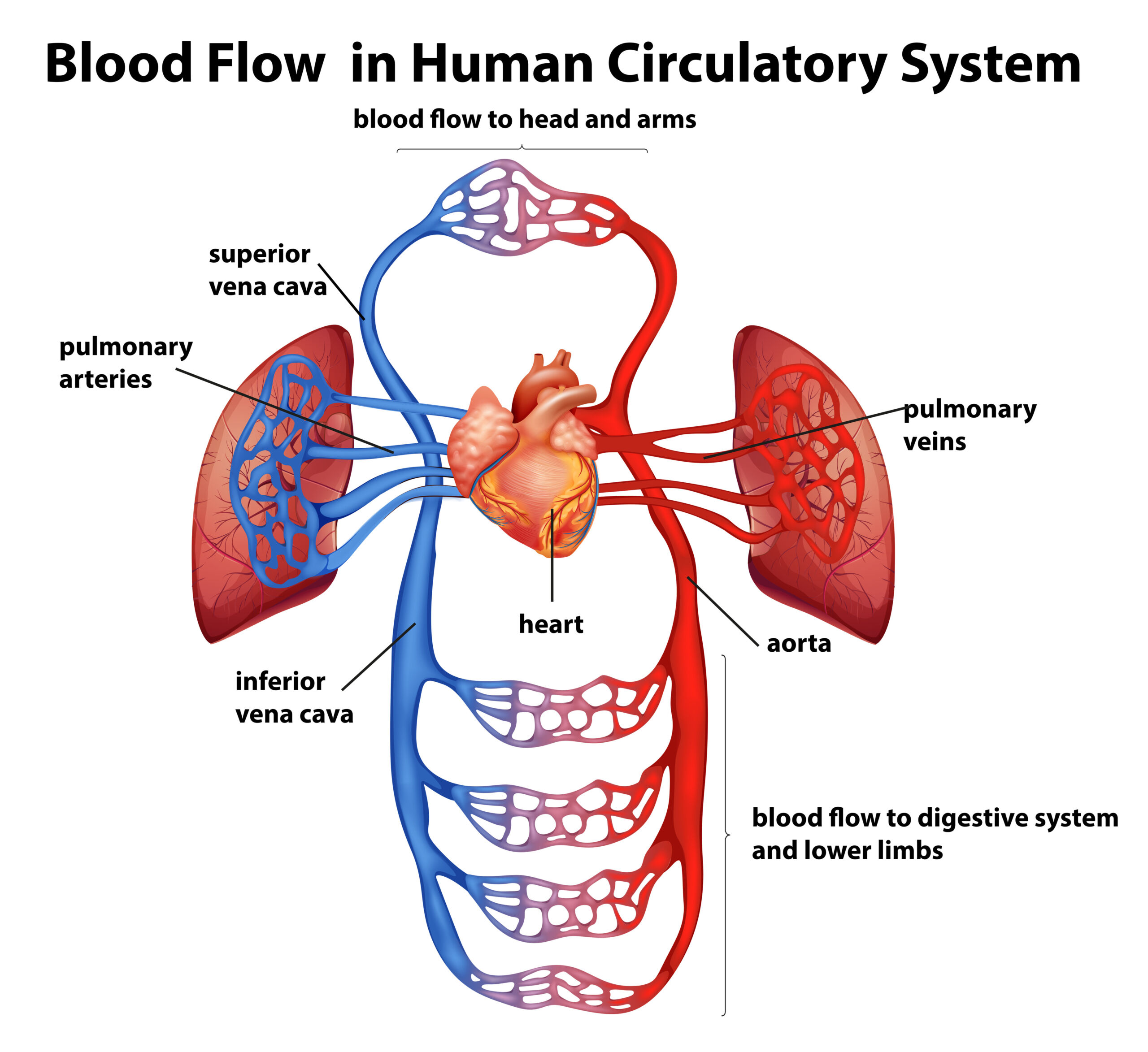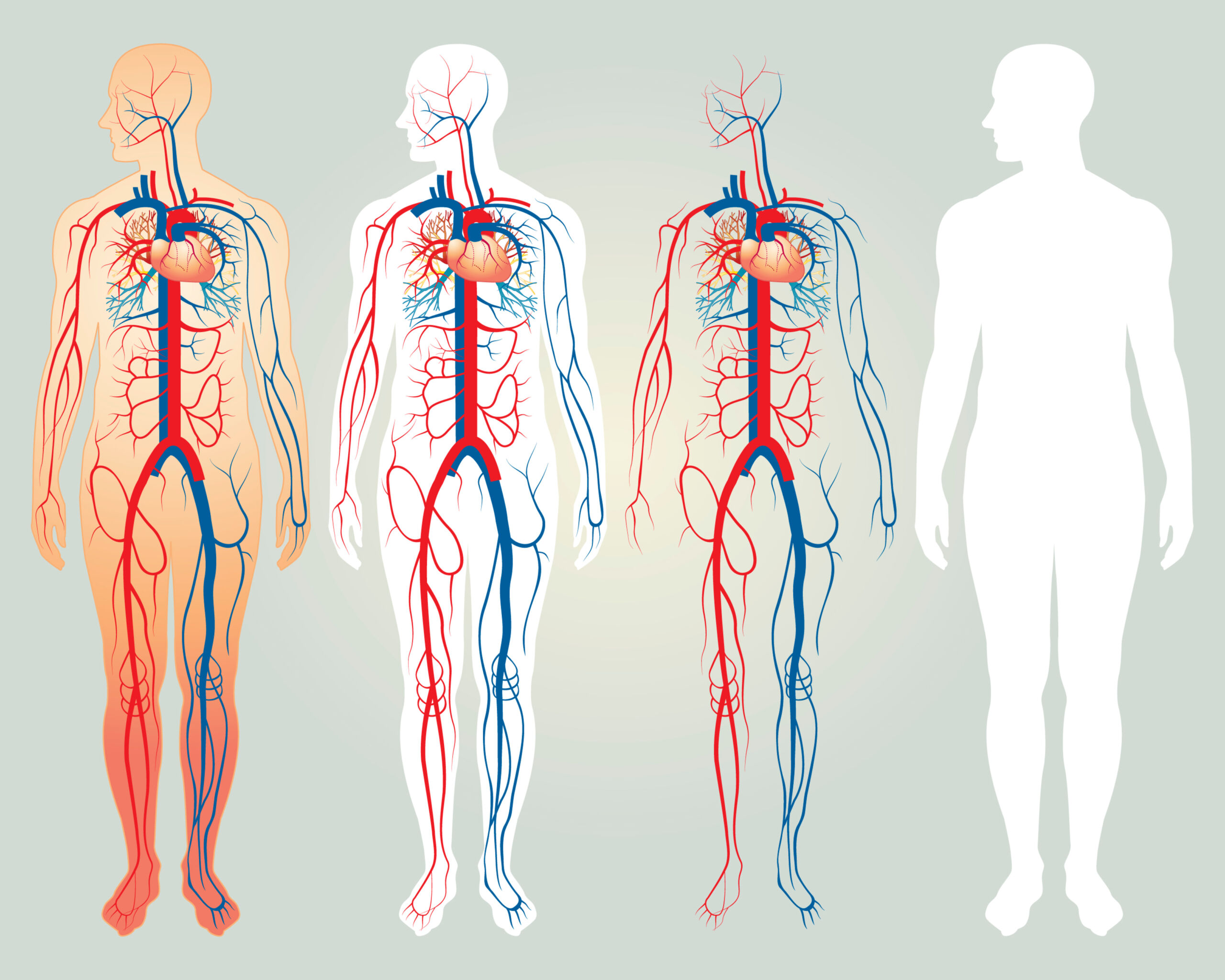In the two previous installments, we talked about the role of cardiac output and blood volume as it pertains to overall perfusion in the human body. Today we will finish up with the circulatory system and how it assists the body not only in day to day maintenance of homeostasis but also how it responds to episodes of hypo perfusion. Adequate perfusion relies on three factors to be effective. An intact pump (the heart), an intact fluid volume (the blood) and and intact piping system (the blood vessels). These three parts working in unison allow us to not only perform our day to day duties but also to assist us when our body is not working as it should. If any one or more of these parts isn’t intact or working as it should, then shock can occur.
Once we reach adulthood, our human body contains around 60,000 miles of blood vessels. These blood vessels are tasked with not only transporting oxygen and nutrients to the all the cells of the body, but also transporting waste products and providing a pathway for removal. Simply speaking, the circulatory system is comprised of arteries (any vessel that carries blood away from the heart) and veins (any blood vessel that returns blood back to the heart). Arteries are the high pressure side of the circulatory system and only contain about 10-20% of our total blood volume at any time. The venous system is the low pressure side of the circulatory system and usually contains approximately 70% of our total blood volume. The remainder of our blood volume is usually in the capillaries and organs of the body itself. Because the venous side is at a lower pressure than the arterial side, it contains valves that prevent back flow of blood during diastole or the resting/refilling phase of the cardiac cycle. Both arteries and veins have the capacity to relax and constrict but arteries are more efficient in decreasing their diameter due to the fact that they have a large middle layer called the tunica intima. One of the ways the body responds to episodes of hypo perfusion is to constrict both arterial and venous blood flow in the periphery to theoretically shunt blood to the core where the vital organs reside. This compensatory response causes outward signs such as pallor, cool skin temperature and delayed capillary refill. The pediatric population utilizes peripheral vascular constriction extremely effectively to compensate for periods of hypo perfusion.
Historically, we were taught that arteries carry oxygenated bright red blood and veins carry de oxygenated dark red blood. This is not completely true. As stated earlier, any blood vessel that moves blood away from the heart is called and artery. While most arterial blood vessels carry oxygenated blood, there are two exceptions in the human body. The Pulmonary Arteries carry deoxygenated blood from the right ventricle to the lungs for removal of C02 and replenishment of oxygen and the two Umbilical Arteries carry deoxygenated blood away from the fetal heart to the placenta. Conversely, the Pulmonary Veins carry oxygenated blood to the left atrium after it leaves the lungs and the Umbilical Vein carries oxygenated blood back to the fetus from the placenta.
Certain shock pathologies such as Sepsis, Anaphylaxis and Neurogenic insults can cause the blood vessels of the body to dilate and therefore increase the overall diameter of the blood vessels. This increase in diameter will cause overall blood flow delivery to the cells of the body to diminish drastically. This type of shock is termed Distributive Shock as there is a problem with distributing the blood effectively and efficiently to the body’s organs. Treatment for distributive shock often involves not only fluid replacement but also medications to decrease the diameter or lumen of the blood vessels to restore adequate perfusion. Medications such as Norepinephrine (Levophed), Phenylephrine (Neosynephrine) and Midodrine all work to stimulate Alpha 1 receptors and cause vasoconstriction. Certain other drugs like Nitride (Nitroprusside), Hydralazine (Apresoline) and Nitroglycerine (Nitrostat) work to dilate blood vessels to bring blood pressure down. These medications work to suppress the Alpha 1 receptor response and therefore cause vasodilation.
The human body is an incredible machine that works tirelessly behind the scenes to maintain a very narrow range of many different levels. It likes a certain pH of the blood, a certain blood sugar level, a certain core body temperature, a certain perfusion level. This is called homeostasis. Overall perfusion is just one of the things that the human body maintains from second to second and effectively maintains it within a very narrow range. The body can also respond to insults by activating certain mechanisms to attempt to restore homeostasis. Understanding of how, why and when the human body will respond to these insults, assists the healthcare provider with providing timely, effective and data driven treatments to our patients.


